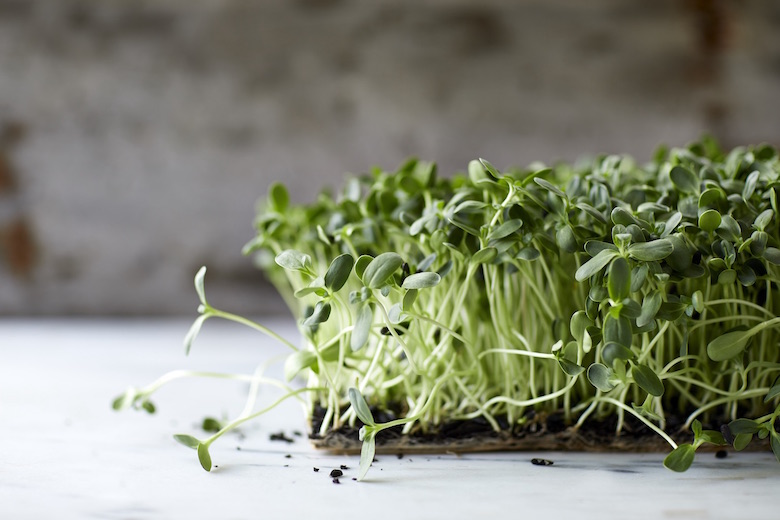Seeds. Water. Time. Add an ounce of patience and you will be rewarded with hardy newborn sprouts. They are living proof of how eager cells are to divide and how little they require to thrive. Crisp and juicy, sprouts arrive ready to eat—on soups, tossed in salads, layered in sandwiches, simply dressed with a little lemon juice and sesame oil, lightly cooked, or blended in juice. With every bite, you’ll enjoy an antioxidant boost, increased bioavailability of nutrients, and easier digestion.
It might seem simpler to buy sprouts in their little plastic containers, but you can’t beat the freshness and variety of homegrown. Store-bought sprouts are often limited to alfalfa and mung bean; maybe radish and clover, if you’re lucky. And they’re already middle-aged, having been manhandled, transported, and subjected to fluorescent lights.
You can sprout legumes (lentils, chickpeas, mung beans, green peas); grains (quinoa, oats, amaranth); leafy vegetables (broccoli, watercress, mustard); and even seeds (pumpkin, sesame, fenugreek). Just make sure you’re starting with high-quality, organic material that has not been irradiated. (Google “organic sprouting seeds” for purchasing options.)
RELATED: What You Need to Know Before Starting a Garden
How to Make Your Own Sprouts
Although you can use a glass jar, my preferred sprouting tool is the hemp bag sold at Sproutman. Hemp provides important air circulation and is naturally antibacterial. To sprout, soak a few tablespoons of seeds or up to half a cup of legumes overnight in a bowl filled with at least three times as much water. The next day, drain seeds and set aside. Soak your hemp bag in fresh water for a few minutes. Then, place the soaked seeds inside the bag, pull the drawstring closed and hang somewhere to let the water drip. Bright light is not necessary. (I hang mine over the sink, which is very handy).
Twice a day, rinse the bag under cool running water for 30 seconds, lightly massaging the seeds inside to make sure no mold forms. Sprout action will generally take place in three to five days. Once the sprouts have fully developed, refrigerate them right in the bag (be sure it’s dry) for up to two weeks.
It may be a stretch to call it micro-farming, but you will definitely feel a sense of pride at having raised this vital crop. Personal growth, indeed.



